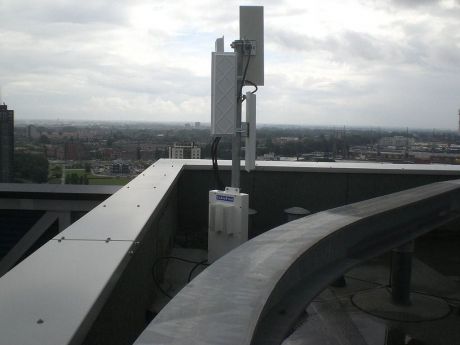Efficient antennas for wireless interconnects

CableFree-Point-to-Multipoint-Rotterdam-Europe
By Millsbi (Own work) [CC BY-SA 4.0 (http://creativecommons.org/licenses/by-sa/4.0)], via Wikimedia Commons
With wireless networks connecting users to information technology devices and to other users, how far behind are wireless interconnects for chips?
Traditional wired chip-to-chip and on-chip interconnects limit
high-speed performance of integrated circuits. Wireless interconnects
with integrated antennas are emerging as an attractive alternative,
speeding up communications in digital systems, while also significantly
simplifying the design process.
The latest technology for constructing integrated circuits allows good circuitry work at millimetre-wave frequencies. Within MIANT (Monolithic integrated antennas), scientists worked on efficiently integrating the very small antenna.
Scientists proposed using the circuit ground planes as radiating elements for the integrated antennas. To achieve this, they cut the circuitry ground supply plane into patches and used them as antenna electrodes. This allowed for optimal usage of chip area as the antennas shared the same metallisation structure with the circuits.
The team combined numerical and experimental techniques to address some key issues that pose a barrier to the successful antenna integration. The silicon substrate of the embedded antennas presents high dielectric losses in the microwave range. A high-resistivity substrate helped minimise the dielectric losses in the substrate. In addition, scientists used very thin substrates to reduce interference between the integrated digital circuits and the wireless chip-to-chip link.
These studies should provide a sound theoretical basis for implementing wireless chip-to-chip interconnects. Antenna integration into very thin substrates permits high wireless chip-to-chip data rates that can reach up to 10 gigabits per second. Except for digital systems, this study into integrated antennas has wide implications for sensors for efficient data harvesting.
published: 2016-02-03

